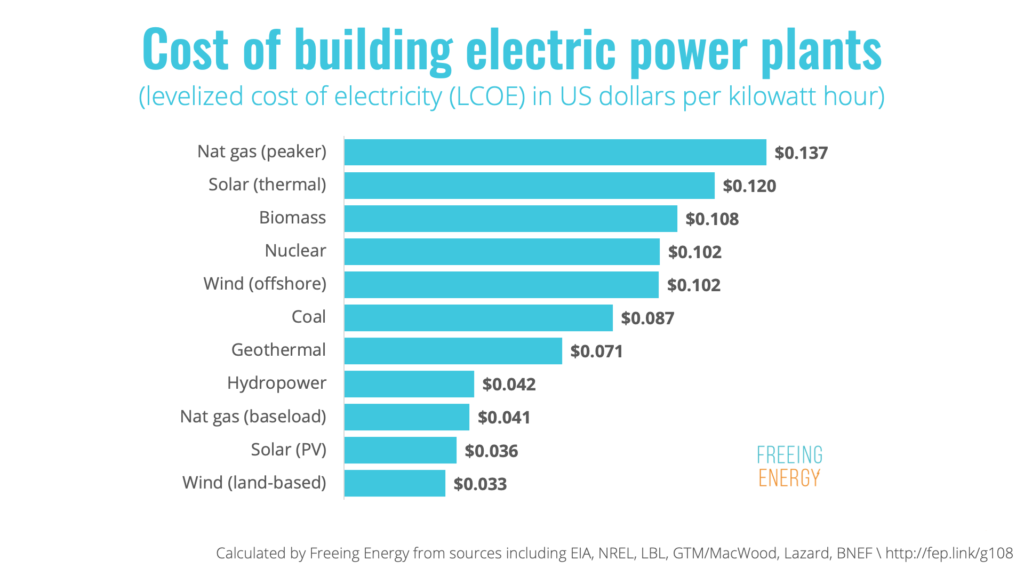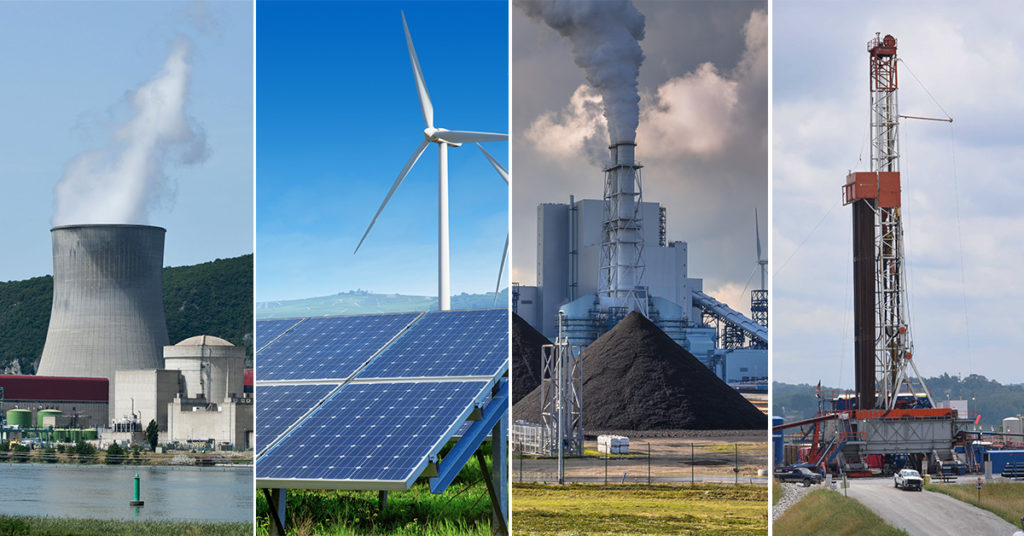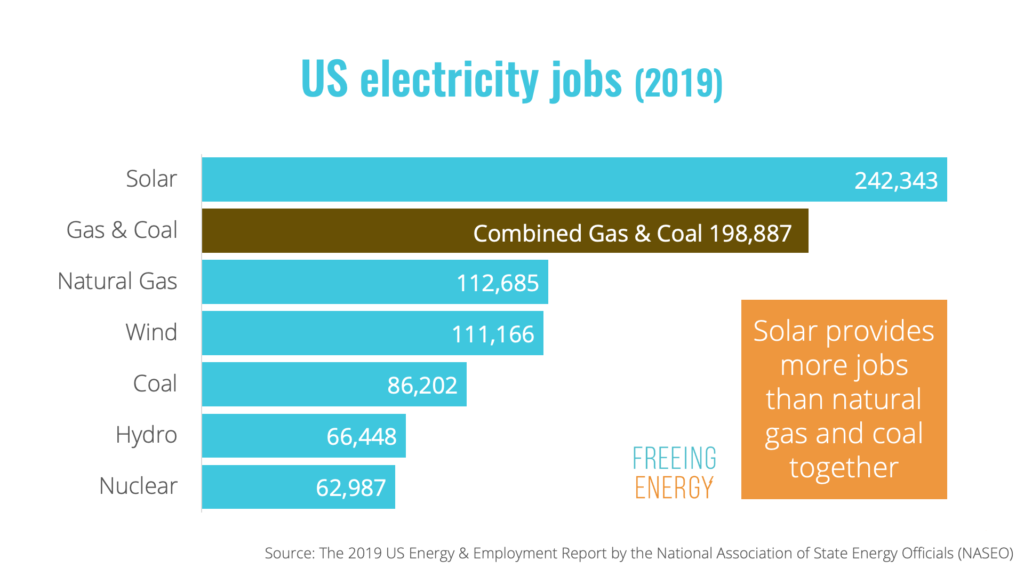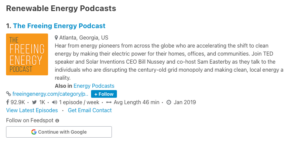How should we generate electricity for the world’s grids?
This may be one of the most important questions of the 21st century. The stakes are incredibly high. At $2 trillion a year, electricity is one of the largest and most influential industries on earth. Whichever directions we take, some of the world’s largest corporations will fade away and new ones will emerge. Our choices will likely reshuffle the geopolitical world order. And, as many believe, the decisions we make about the grid today could affect the very livability of many parts of our planet in the coming decades.
The debate is overflowing with sound-bites, misleading simplifications, and vested interests. One side says fossil fuels create dangerous greenhouse gases. The other side says solar and wind are too unpredictable. Yet another side says nuclear is too dangerous. And, everyone is asking about jobs, subsidies, free markets, and national security. At first, these issues may seem overwhelming and intractably complex. It is possible, however, to wade through all this. It is possible to make far more informed decisions than we are making today.
It starts by breaking down the questions into digestible components.
First of all, let me challenge the way we are debating power plants. Many people see this as a competition between renewables and fossil fuels. I think this misses the more fundamental point of economics. Electricity generation really comes down to competing business models: fuel-based and fuel-free. Coal, natural gas, nuclear and biomass are all fuel-based. This approach is essentially the old Gillette business model – sell the razor (the power plants) but make all your profits on the blades (or the fuel). Wind, solar, geothermal, and the granddaddy, hydro dams, are examples of fuel-free generation sources. These are more like the real estate business model – make large upfront investments to build them, then sit back and collect rent.
GET MONTHLY NEWS & ANALYSIS
Unsubscribe anytime. We will never sell your email or spam you.
Comparing power plants
There are countless ways to think about the grid and how we power it. I’m going to touch on some of the key things to consider in the following paragraphs. I hope these will be a good first step in deciphering the complexity. Then, armed with these concepts, we will be in good shape to dive into all the power generation options in future articles.
LIFETIME COSTS
Behind all the ideology and rhetoric of energy choices, most of the decisions actually come down to costs. The power industry even has a way to compare the cost of fuel-based and fuel-free electricity on an apples-to-apples basis – it’s called the Levelized Cost of Electricity (LCOE). This approach divides the lifetime costs to build, operate, and fuel a power plant by the total amount of electricity generated over that time. The LCOE metric is used by the U.S. Government, investment banks and just about everyone else. Their numbers don’t match perfectly but they generally agree – solar and wind are the cheapest with nuclear and coal being the most expensive.

FUTURE COSTS
The LCOE of power plants is certainly important but it’s really just a rear-view mirror showing us where we have been. When making decisions about new plants, it is crucial to try and predict where costs are going. For a century, the technology of power plants evolved very slowly. The biggest challenge utilities faced on power plant decisions was predicting fuel costs. Regulations, subsidies, and global demand combined unpredictably to create real headaches for planners. But all this got much worse with solar and wind. For the first time in industry history, costs didn’t bounce around – they just kept going down. Never before had costs been driven by technology curves instead of fuels. This broke decades of modeling. Governments and utilities continue to grossly underestimate just how far and fast the cost of technology-driven electricity generation will fall. As a result, many decisions about new power plants are proving to be more expensive than necessary, even after just a few years.
ENVIRONMENTAL IMPACT
Carbon dioxide (CO2) from fossil fuels has grabbed nearly all the energy headlines in recent years but there is a lot more to be considered. Extraction, distribution and waste handling of fuels like coal, uranium and natural gas create immediate and occasionally severe impacts on the environment. For example, coal ash is the largest industrial waste product in the US and it is full of mercury, lead, and arsenic. Or consider methane, the main component of natural gas. Methane is 20-times more potent as a heat-trapping greenhouse gas than CO2 and substantial amounts escape into the atmosphere as natural gas is distributed to power plants. Environmental impacts are not limited to fossil fuels. Biomass requires huge amounts of fresh water. Solar and wind farms impact local habitats. And solar panels are too new to have established a proven recycling solution.
JOBS
As one of the largest industries on earth, the electricity sector employs vast numbers of people. Their jobs are spread across three main areas: extracting fuel, building power plants, and running operations. For many decision-makers, especially politicians, electricity generation is prioritized by the number of jobs it supports. Despite the current focus on coal-related jobs, solar and wind employ far more people. The U.S. Department of Energy says there are 240,000 jobs in solar, 103,000 in wind, and only 86,000 for coal-powered electricity (these numbers have shifted in 2020 due to the pandemic). The number of coal-related jobs has dropped substantially over the last 40 years. But the biggest factor is not regulations, it’s actually automation – coal extracted per miner has tripled over that time.
NATIONAL SECURITY
If a large portion of the electric grid goes down for any length of time, the health and safety of every citizen is directly impacted. Grids are facing ever larger threats as cyber and physical attacks play out across the world. Some politicians have lobbied for nuclear and coal subsidies as a way to increase the grid’s resilience in the face of an attack. Ironically, 90% of nuclear fuel comes from outside the U.S., including U.S. competitors like China and Russia. Alternatively, the U.S. military is aggressively turning to solar farms built near bases to ensure stable electricity even if the grid goes down.
SUBSIDIES, INCENTIVES, AND TARIFFS
If there is one area of electricity that is opaque and confusing, it’s the government’s role in the electricity markets. While the solar and wind tax incentives are widely known, the government is substantially supporting every other kind of power generation as well. For example, $400 billion (yes, billion) in tax breaks, incentives, and grants have gone to oil and gas since 1950. Every year, $4.7 billion in recurring, annual benefits go to fossil fuel project owners. The nuclear industry receives billions in loan guarantees and hidden subsidies like avoiding the costs for waste storage and insurance requirements. Subsidies are widely debated because tax law is complex and often benefits more than just one kind of power. For the sake of credibility, all the data cited here refers to a direct subsidy and comes from U.S. government reports.
In addition to these direct subsidies, there are several less obvious but potentially even more influential economic discontinuities. For example, thermal power plants, like coal and nuclear, require vast amounts of water to keep them cool. In many cases, this water is free for them. Another example is that the U.S. government promises to cover the costs of massive nuclear accidents. Without this guarantee, accident insurance could render nuclear power uneconomic. Lastly, critics claim that the biggest invisible subsidy is that governments and citizens are left to pay the massive downstream healthcare and environmental costs caused by particulate pollution and greenhouse gases from burning fossil fuels in power plants.
DISPATCHABLE POWER
The demand for electricity changes from second to second. Over the course of a day, demand can swing substantially. Utilities must precisely manage power plant output to match this demand in real time. The ability to control output is called “dispatchable power.” Nuclear plants take days to ramp power output. Coal plants take hours. Hydro plants and some natural gas plants, called peaker plants, can ramp within minutes. The problem is that solar and wind make all this much harder because they aren’t dispatchable. Clouds and wind patterns change throughout the day, well outside the control of utilities. Even though solar and wind are the least expensive source of power, they make the rest of the grid work even harder to ensure the precise level of electricity gets delivered to electricity consumers. Batteries are a relatively new entrant onto the grid but they are already demonstrating they will make dispatching power a problem of the past, even for fossil fuel plants.
SAFETY
In terms of accidents, injuries and loss of life, most people are surprised to find that nuclear is the safest type of power plant – not a single life was lost at a U.S. nuclear power plant in the last few years. This is largely due to the intensive safety regulations placed upon the nuclear industry. By contrast, the most deadly way to generate electricity, coal, resulted in 15 U.S. deaths in 2017. Even solar and wind contribute to annual injuries as workers fall from roofs and turbines.
LONG-TERM HEALTH IMPACTS
While direct fatalities at power plants remain small, the long-term health impact of burning fossil fuels in power plants and transportation is enormous. Because data can only be gathered indirectly and requires decades to assemble, this impact of particulate pollution is often overlooked or marginalized. That said, a recent MIT study found that pollution from fossil fuel power plants leads to 52,000 premature deaths annually in the U.S. alone.
WATER USE
About 34% of all U.S. freshwater withdrawals are used to cool “thermal” power plants like nuclear and coal (40% goes to agriculture). Most of that water is “once-through” meaning that the water is used to cool the plant and then returned back to the nearby lake or river. Separately, as parts of the planet become warmer, and water flows are reduced, some power plants are temporarily shut down because they can no longer be safely cooled. Water scarcity also affects hydro dams, whose power output often fluctuates across the seasons. Solar and wind plants require virtually no water for their operations.
LAND USE
Wind farms are the most land-intensive type of power plant but the land can be dual-purposed for farming and other applications. In terms of single-use land, solar is the most intensive. However, most large solar farms use land, like deserts, that would otherwise go unused. Unlike any other kind of electricity generation, solar can be used on rooftops, over parking lots and countless other locations that serve an existing purpose. Fuel-based power plants use less land but do require hundreds of thousands of acres for waste storage and mining.
A few more
The list above are the main characteristics to consider when planning the grid but there are more. These include time to build a new plant, ability to build within a community, capacity impact on nearby transmission lines and substations, use of rare earth materials, public perception, physical location, and availability of specific land features (e.g. dammable rivers).
Even though electricity usage in the U.S. has plateaued, large parts of the grid, like aging coal and nuclear plants, need to be replaced in the coming decade. It’s possible that electric vehicles could spark new growth. And, outside the U.S. electricity consumption will continue growing rapidly as we bring electricity to another billion people who, today, have no electricity at all.
Armed with these measuring sticks above, how should the U.S., China, India, and Africa look to build out their grids? In future articles, we are going to take a look at the big five (coal, nuclear, gas, solar, and wind) and see how they rank against all these criteria. We’ll also talk about the single best solution for power – energy efficiency or what Amory Lovins coined “nega-watts.” Stay tuned.
Additional information
- Check out how the US states rank with various types of generation at Choose Energy






6 Responses
I suggest an alternative source to your leading five: Micro-Hydro. The potential is huge. Someone should do a study, a little like the one that you did on the area of solar to power the country. This study would integrate the rain weight times altitude above sea level. The result is available hydro energy. My guess is that less than a tenth of 1% would power the country. I can describe two new sources: 1. Positive displacement siphon, over an earth fill dam. 2. Pipe in a stream bed, diverting unneeded flow to energy production. Neither is intermittent, like wind and solar. Number 1 can be a storage scheme, with loop efficiency in excess of 95%, unlike hydro schemes in use at 48%. Of course, just converting hydro schemes in use, to positive displacement would be a huge first step.
The public could be awakened to some of the hydro potential, by filling their dishpans through a hydraulic motor that could generate more energy than their cell phones uses.
Newt, thanks as always for expanding the discussion. Micro-hydro holds great promise. In fact, I’m quite surprised it’s not more widely used already. I’m a big fan of Emrgy.com. They’ve created a breakthrough in lower cost and improving lifetime. Their math of the availability of suitable moving water suggests that this energy source could become a substantial part of the grid. I will add a deeper dive on Micro-hydro onto my research and writing list.
The answer is simple, electricity from ocean tidal energy will be the best way within very short time.
Hay una mínima posibilidad de que se produzca un ACCIDENTE NUCLEAR como los de Chernobil y Fukushima, pero si llegan a producirse LAS CONSECUENCIAS SON DEVASTADORAS.
English, “There is a minimal chance that a NUCLEAR ACCIDENT will occur, such as Chernobyl and Fukushima, but if they occur, THE CONSEQUENCES ARE DEVASTATING.”
No matter how low the chances of another nuclear disaster happening, many people argue it’s still an unnecessary risk. I think this is at the heart of the nuclear / climate / safety debate.
what it all comes down to is..cost of production vs output of product and creating a turn-key business model aka job creation – tax brakes/grants – andddd profitability!